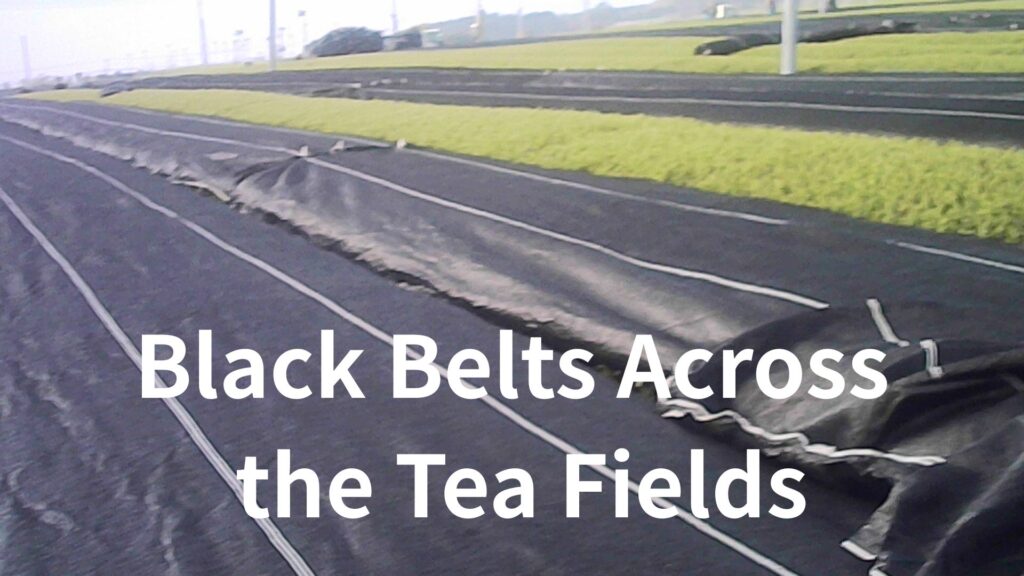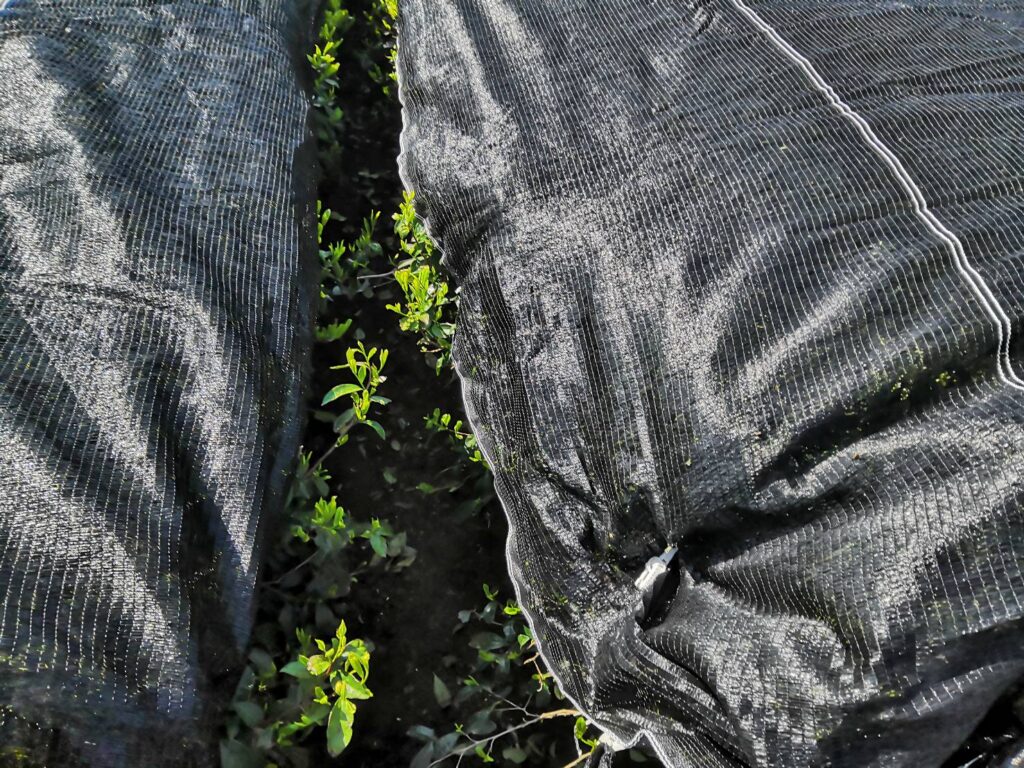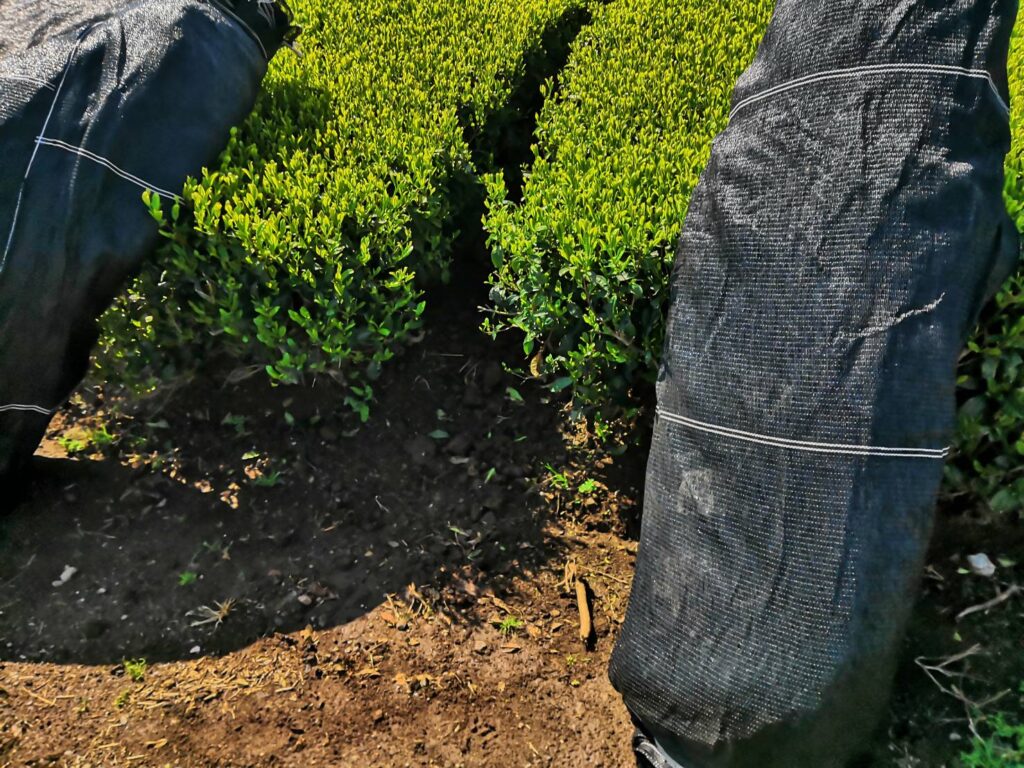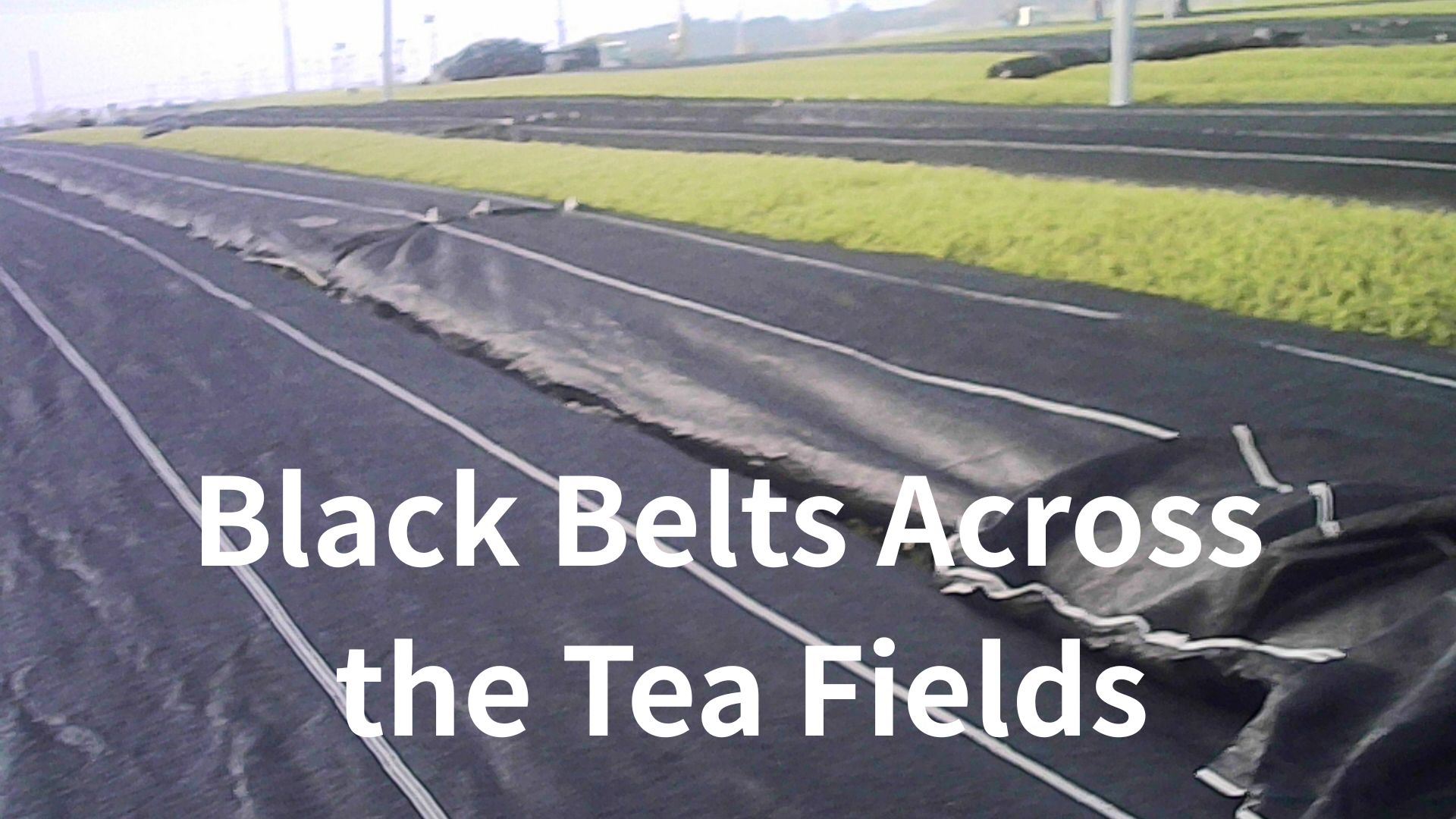
Black Belts Across the Tea Fields: The Intricate Work of Baron Covering!
Today, our workplace was transformed into a landscape where countless black belts seemed to stretch across the vast tea fields. This is “Baron Kake,” or Baron Covering, a crucial step in cultivating high-quality Tencha (the raw leaves for Matcha). We meticulously covered each row of tea bushes with long, narrow black nets called Baron.
The task of covering over 20 hectares of tea fields, nestled in the Kirishima mountains, with these slender Baron sheets, one after another, demands immense perseverance and physical endurance. Our team of 20 was fully engaged in this vital operation.
Baron nets are used for shading and retaining warmth. By blocking direct sunlight, they help the tea leaves develop a vibrant, deep green color, reduce the production of bitter catechins, and increase the levels of theanine, the amino acid responsible for the tea’s umami flavor. They also protect the delicate leaves from sudden frost and excessive dryness, playing a particularly significant role in the cultivation of premium Tencha.
We unfolded the long, narrow Baron sheets and carefully draped them over the rows of tea bushes, pulling them taut from both sides to avoid any sagging. Then, at intervals of about 3 to 4 meters, we used the stringed fasteners attached to the edges of the Baron to clip and secure the net to the tea branches.
This fastening process proved to be surprisingly strenuous on the back. Maintaining a bent-over posture was tiring enough, but selecting branches of the right thickness for the fasteners was also challenging. Branches that were too thin would break under the tension of the Baron, while those too thick wouldn’t allow the fasteners to close properly.
The experienced workers moved with practiced ease, selecting the appropriate branches and securing the fasteners with swift, sure movements. I could only watch in admiration, as I struggled to keep up their pace, often hesitating over which branch to choose.
Furthermore, it was essential to stretch the Baron evenly from both sides to avoid any slack. If the tension was too weak, strong winds could easily lift the net. It was also crucial to ensure that the Baron covered the tea bushes completely to the very edges, requiring meticulous attention to prevent wind penetration and create uniform shading.
By noon, our team had covered a significant number of rows, and we took a break with a sense of accomplishment. However, our respite was short-lived. The farm owner delivered a stern critique, pointing out several areas where the Baron was loose or didn’t fully cover the bushes.
To our surprise, even the veteran workers among our team of 20 hadn’t achieved a flawless result. This brought home the realization that Baron covering is a more delicate and technically demanding task than it appears. The afternoon was spent rectifying the identified issues, a sobering reminder of the precision required.
The countless black belts stretching across the tea fields are not merely shade nets. They are the embodiment of the farmers’ years of experience, knowledge, and skill in nurturing top-quality Tencha. Through today’s revisions, I gained a deeper understanding of their importance and the difficulty of installing them perfectly. The silent, dark bands covering the tea plants seemed to tell the story of the meticulous and patient handwork that goes into producing the delicious Matcha we enjoy.




Comments